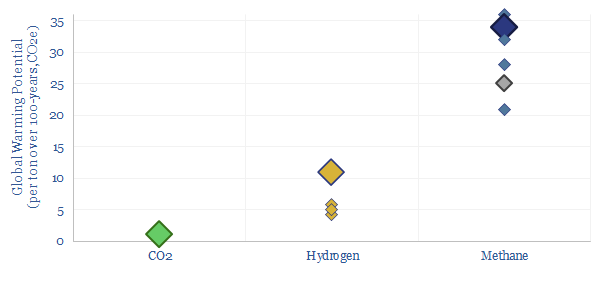
…shorter and simpler value chains, direct substitution for pre-existing hydrogen in industry; or transporting hydrogen in carrier molecules (toluene, ammonia, electrofuels are less likely to result in hydrogen emissions, even…
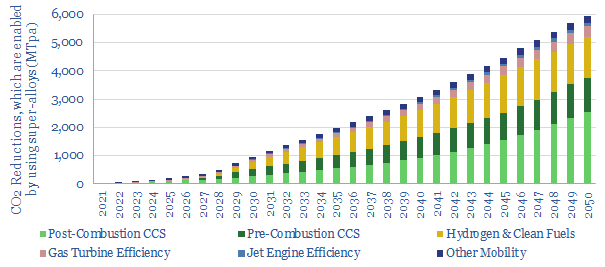
…8), clean fuels such as hydrogen or blue ammonia (page 9), and around half of the market is currently linked to aerospace and defense spending, which matters for geopolitical security?…
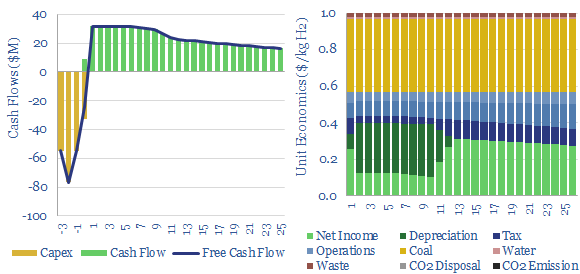
…ammonia, methanol), for fuels (c30%), or combusted in a power plant (c20%). However, CO2 intensity is very high, as much as 0.6 kg/kWh-th, 3x more than natural gas CO2, 1.5x…
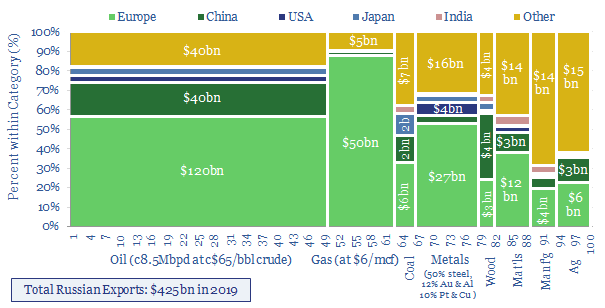
This data-file breaks down Russia’s export revenues, import country by import country, looking across oil, gas, coal, steel, aluminium, copper, gold, aluminium, ammonia, agricultural products, other metals, materials and manufactured…
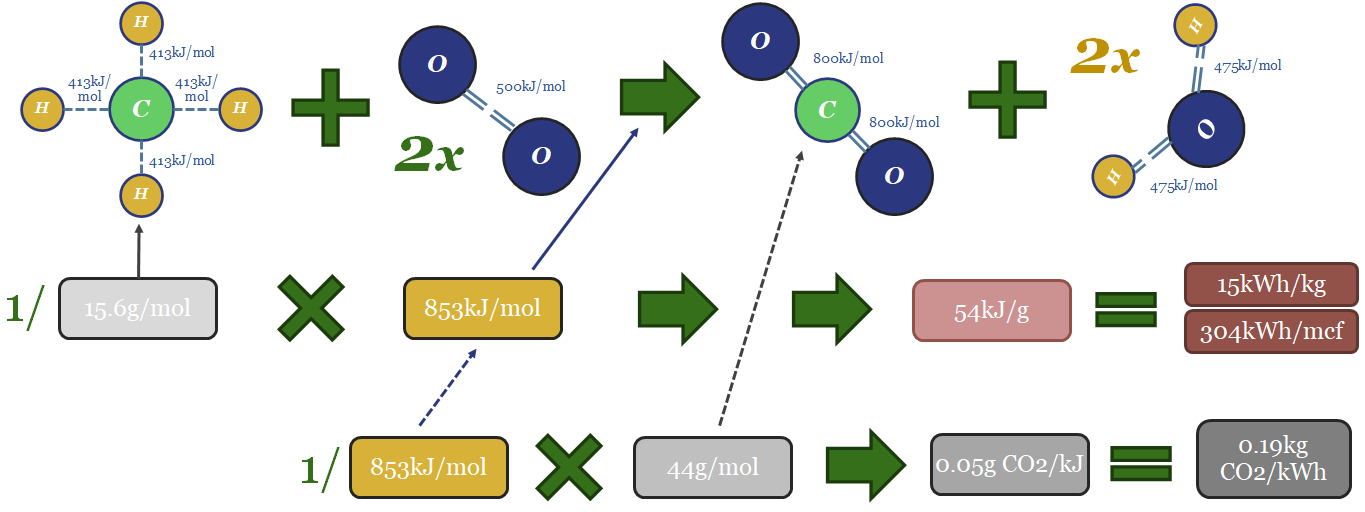
…hydrogen industry is currently looking for the perfect hydrogen carrier — is it ammonia? is it toluene? — in our view, a near-perfect one already exists, it is called natural…
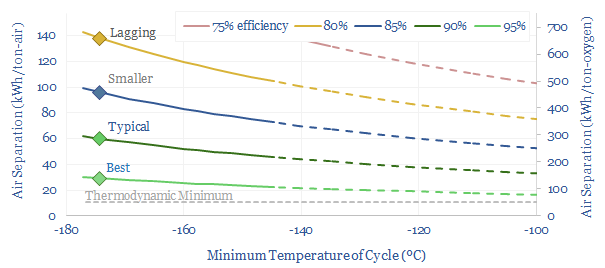
Cryogenic air separation is used to produce 400MTpa of oxygen, plus pure nitrogen and argon; for steel, metals, ammonia, wind-solar inputs, semiconductor, blue hydrogen and Allam cycle oxy-combustion. Hence this…
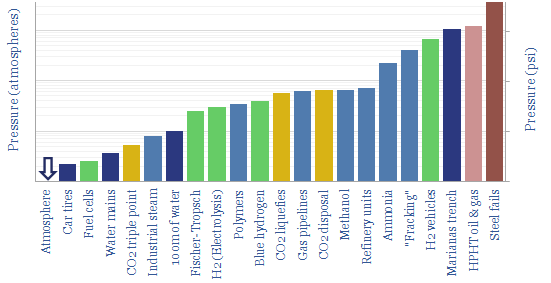
…LNG plants. Higher pressure industrial processes will reach around 200-bar, for example in the turbine inlet temperature of a gas turbine, or in an ammonia plant. One conclusion is that…
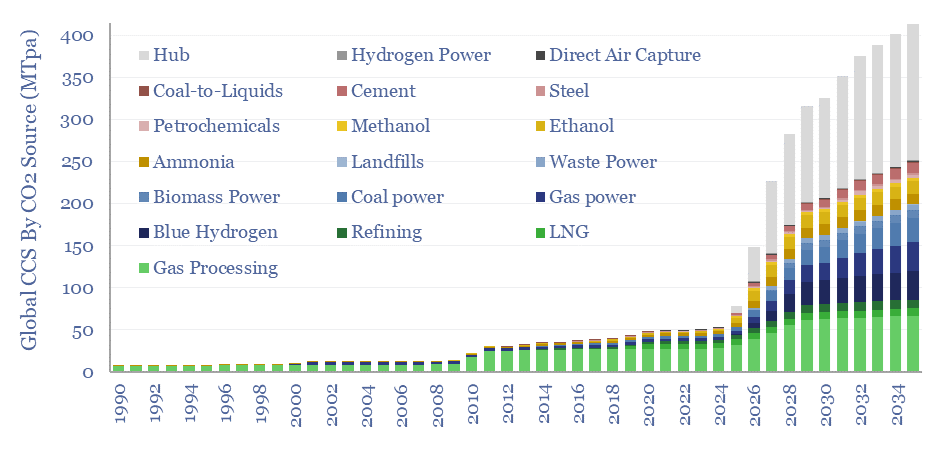
…c15% by 2035. The second biggest clear source is via the rise of blue hydrogen and blue ammonia projects, which are the source for 11% of risked CCS by 2035….
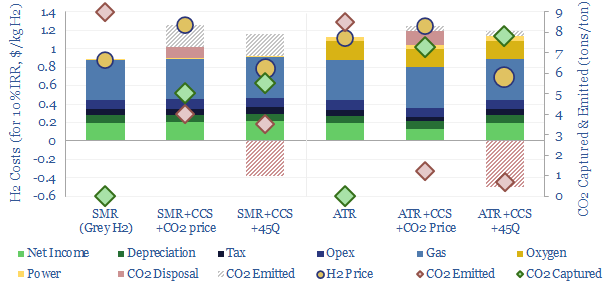
…autothermal reforming (ATR). Each has merits and challenges. ATR looks excellent for clean ammonia. While the IRA creates CCS upside for today’s SMR incumbents, across industrial gases, refining and chemicals….
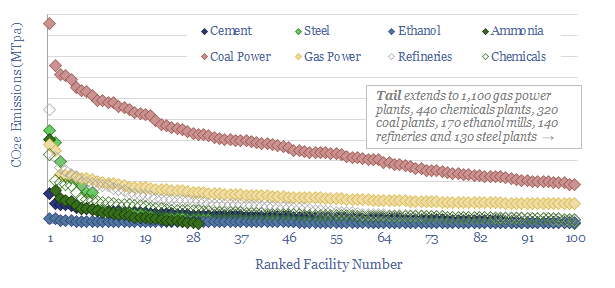
…likely too small. The best candidates are c100 specific facilities in the cement, steel and ammonia industries, which are the “right size”, have concentrated CO2 emissions and explain around 2%…










